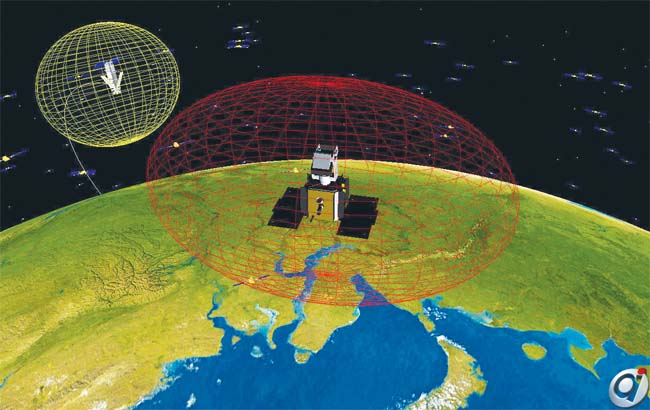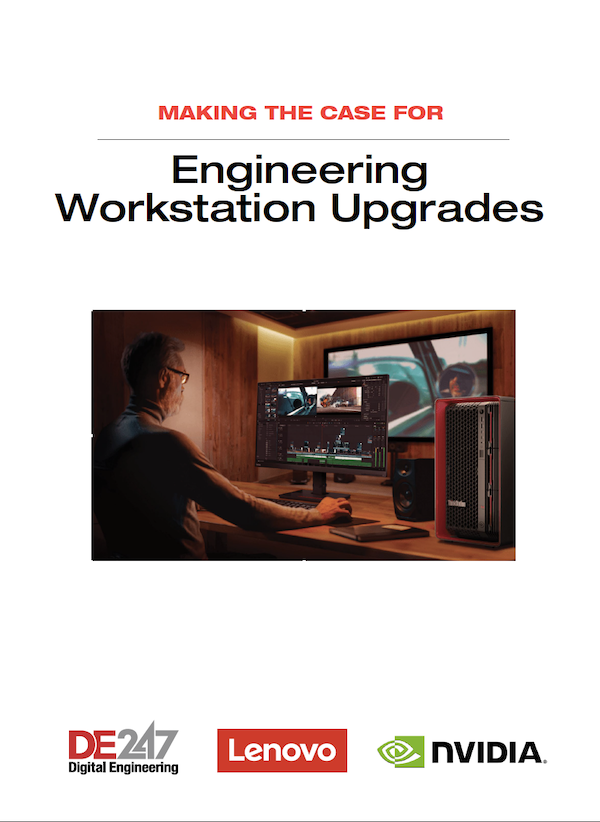With HPC, We Have Liftoff
a.i. solutions cuts data analysis time from months to days with Microsoft's high-performance computing server.
August 1, 2010
By David Graff
Aerospace engineering firm a.i. solutions is responsible for the mission design and orbital dynamics analysis at the heart of successful NASA space missions, and is no stranger to extremely complex data analysis. For example, planning a space mission is an intensive task—requiring precise analysis through which optimal launch times and navigation courses are determined. A single inaccuracy could cause catastrophic failure, and potentially result in the loss of millions of dollars.
 The FreeFlyer software, once used only on single desktops, can now be used in conjunction withHPC Server 2008 to run multiple simulations simultaneously. |
Part of a.i solutions’ business is based on the analysis capabilities of its FreeFlyer software, a program that is used by the in-house team to service customer requests, but also sold direct to those wishing to perform analysis within their own four walls. The FreeFlyer program had been more than adequate for customers’ analytic needs for almost a decade, but more recently, demand increased—both in terms of the volume and complexity of projects.
The Analytic Challenge
a.i solutions customers, specifically NASA, began to present analysis problems on an entirely new scale—to the point at which running the FreeFlyer program on a single desktop, as had traditionally been the approach, was no longer an efficient or viable option.
This challenge became impossible to ignore when NASA issued a request for a.i solutions to analyze several thousand pieces of debris from a Chinese anti-satellite test, and their potential impact on NASA satellites within the same orbit, over a period of 20 years. The existing single computer system would have taken months to deliver the results, and NASA couldn’t afford to wait, given that its astronomically expensive satellite equipment hung in the balance.
The HPC Solution
With the need for greater computing power evident, the natural step was for a.i solutions to explore a transition to high-performance computing (HPC), which uses the power of multiple PCs to perform tasks that require intense computing power. The company briefly considered a Linux set-up, but ultimately felt more comfortable and confident with Windows, selecting Windows HPC Server 2008.
“Our in-house team and our customers both have a long history with Windows, so we certainly felt the transition would be simplest if we selected the familiar Windows environment, rather than struggling to learn an entirely new set-up,” explains David Rand, systems engineer with a.i solutions. “When we reviewed the Linux system, we felt the accompanying documentation wasn’t sufficient to ensure success.”
It then took a.i solutions just three hours—using information on the Microsoft website—to get FreeFlyer up and running with the solution.
Now, rather than working on an analysis problem on a single desktop, the a.i solutions team develops analysis solutions on their local Windows-based computers, and then uses Remote Desktop Connection to push the solutions to the Windows HPC Server head node for processing by the compute nodes.
“Our analysts didn’t need any formal training to work with Windows HPC Server,” says Rand. “They saw pretty quickly what they could do with it, and have embraced the new capabilities ever since.”
Simulation Speed Boost
a.i solutions has found that its engineering simulations run up to eight times faster using the Windows HPC Server 2008, enabling multiple simulations to run side-by-side and reducing turnaround time considerably. The NASA Anti-Satellite test analysis, for example, took less than three days to complete—rather than the 30-plus days the previous technical arrangement would have required to reach the same conclusions.
“Before, there were problems that we just couldn’t take on, but now we can run those problems in just a couple of days. That’s tremendous,” says Rand. “Faster analysis enables the team to do so much more.”
Being able to provide faster analysis services and handle even more complex data has enabled a.i solutions’ involvement in some fascinating projects.
Space debris, the result of activity such as the Chinese Anti-Satellite tests and the Iridium/Cosmos collision in 2009, collects around the earth’s poles in clumps. It presents a threat to the safety and success of every space mission. These clumps shift and move over time, and to varying degrees according to the material’s density. A major research project now under way at a.i solutions is the tracking of space debris distribution, the path it followed to be clumped at the poles, the predicted trajectory for future movement and, most importantly, where it could potentially interfere with planned missions.
This analysis is one of the most complex to express to those outside of the industry and yet, is increasingly one that requires explanation—to budget holders responsible for signing off new mission expenses and to project managers involved in the success of a mission, but removed from the engineering technicalities. With that in mind, a.i solutions is now developing a tool, powered by Windows HPC Server, that visualizes space debris in a compelling way, making both its mass and its movement clear to even the least technically minded people.
In addition, the Windows HPC technology is supporting the analysis central to a space mission planned for 2014. The mission, designed to collate 3D data regarding the magnetosphere, requires four spacecraft to fly in a tetrahedron formation, at perilously close range and with no margin for error. It is an extremely complicated mission to route and requires intense computing power to do so within a useful timeframe.
Although it’s four years away from its scheduled launch, the mission is in the thrust of its design stage. As small changes are made to the make-up and design of the crafts and the project objectives, a.i solutions must run new analysis to ensure the route remains accurate.
“One such change that we’ve dealt with recently,” Rand says, “is that spacecraft location will be determined using GPS, and the route-mapping computations change according to the specific GPS technology built on board each craft. So as the design team finalizes the craft technology, our analysis follows to ensure the route map remains accurate.”
Without HPC technology, he adds, each change would take weeks rather than days to analyze, slowing down the entire project.
Moving forward, a.i solutions’ data analysis skills will support a mission for the Global Precipitation Measurement project, an international cooperative effort to obtain increased understanding of clouds and rainfall processes, and make frequent rainfall measurements on a global basis.
“Without the computing power made available to a.i solutions through Windows HPC Server 2008, the complex analysis required to support this, and other critical projects, would not be possible,” Rand says.
More Info:
a.i. solutions
Microsoft
David Graff is director of U.S. Automotive and Industrial Equipment Industry Solutions, Microsoft.
Subscribe to our FREE magazine, FREE email newsletters or both!
About the Author
DE’s editors contribute news and new product announcements to Digital Engineering.
Press releases may be sent to them via [email protected].






